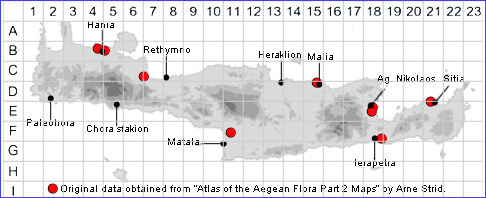
SPECIES DESCRIPTION
MELILOTUS SICULUS
Family and Genus:- See- LEGUMINOSAE
Common Names:- Sicilian melilot
Homotypic Synonyms:- Trifolium siculum, Trigonella sicula.
Meaning:- Melilotus (Gr) Honey-clover. A name used by the Greek academic
Theophrastus and refers to melilot's attractiveness to honeybees.
Siculus (L) from Sicily, Sicilian.
General description:- Erect or ascending annual
Stems:-
1) 20-40 cm., branched.
Leaves:-
1) Leaflets, obovate-orbicular or lanceolate-cuneate, serrate.
2) Stipules, lower, triangular-lanceolate, denticulate, the upper lanceolate, entire
but denticulate at the base.
Flowers:-
1) Racemes, 0·7-1 cm, 3- to 10-flowered, shorter than their subtending leaves.
2) Corolla, 4-5 mm, yellow,
a) standard and keel subequal, longer than the wings.
Fruit:-
1) Legume, 5-8 mm, oblique-ovoid, acute, concentric-striate, yellowish-brown when
ripe.
Key features:-
1) Legume, concentric-striate; acute.
2) Racemes, much shorter than subtending leaf.
Habitat:- Salines and damp meadows by the sea, rarely in ruderal habitats a short
distance inland up to 200 m.
Distribution:- Scattered in W Greece, Mediterranean region and SW Asia. Limited
distribution on Crete mainly around coastal areas in the east.
Flowering time:- Apr-May.
Photo by:- Dr. Armin Jagel
